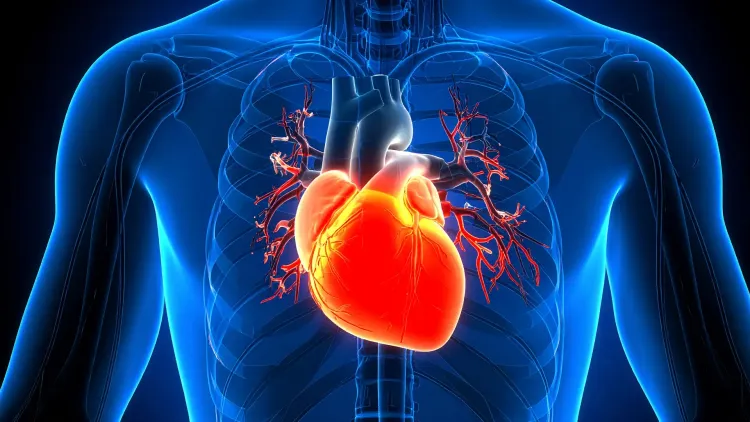Are Long Covid Patients More Prone to Unusual Heart Rhythm Disorders?

Synopsis
Key Takeaways
- POTS is more common in individuals with long Covid.
- Approximately 31% of severe long Covid patients are diagnosed with POTS.
- This condition primarily affects middle-aged women.
- Symptoms include fatigue and an elevated heart rate.
- Simple tests can diagnose POTS and help guide treatment.
New Delhi, Oct 4 (NationPress) A distinctive heart rhythm disorder, known as Postural Orthostatic Tachycardia Syndrome (POTS), is increasingly observed in individuals suffering from long Covid, as indicated by recent research.
The findings reveal that this condition, characterized by an unusually rapid heart rate when transitioning from a lying to a standing position, is more prevalent among middle-aged women than their male counterparts.
For those living with POTS, the simple act of standing can pose significant difficulties. Their heart rates tend to be elevated even at rest and during physical activity. Additionally, these patients often report feelings of fatigue and trouble concentrating—symptoms commonly associated with long Covid.
Researchers from Karolinska Institutet in Sweden have discovered that nearly one-third of individuals with severe long Covid exhibit signs of POTS.
“Previous smaller studies hinted at this correlation, but we can now assert with confidence that POTS is a prevalent condition among long Covid patients. This is crucial information for healthcare professionals and patients alike,” stated Mikael Björnson, a doctoral candidate at the Department of Medicine, Solna, Karolinska Institutet.
The research, published in the journal Circulation: Arrhythmia and Electrophysiology, investigated 467 patients with severe long Covid who had not required hospitalization due to the virus.
A striking 91% of the participants were middle-aged women who were previously healthy and active before developing long Covid.
Among them, 31% received a POTS diagnosis, while 27% exhibited symptoms but did not fulfill diagnostic criteria.
The remaining 42% showed no indications of POTS. Those diagnosed with the condition displayed significantly elevated heart rates during walking assessments and reported a diminished quality of life.
“It’s essential to recognize that POTS can be identified through simple, cost-effective tests available at all healthcare levels. For those diagnosed, various treatments can help alleviate symptoms and enhance life quality,” remarked Judith Bruchfeld, Associate Professor at Karolinska Institutet.
The researchers advise patients with long Covid who notice a notable increase in heart rate upon standing or during physical activity, as well as those experiencing symptoms like dizziness, brain fog, and extreme fatigue, to undergo evaluation for POTS.









